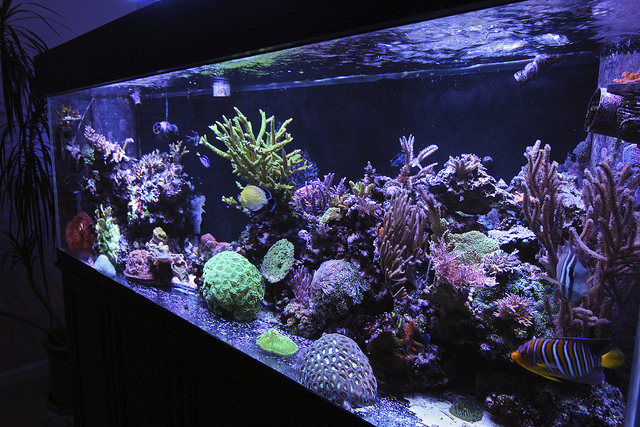A lot of trends have come and gone in this hobby. As folks shake up their zeolite reactors and add a carbon source, the idea of a deep sand bed and refugium seems like a long forgotten memory. Much to the chagrin of substrate companies, the days of buying hundreds of dollars of aragonite are over. Most of us have discarded the DSB as a denitrifier and many others threw out the refugium along with it. But maybe those folks threw out the baby with the bathwater. I think refugiums get a bad rap, but often it’s the implementation that’s the issue. Refugiums done right are still fantastic for those of us who are not chasing the ULNS dragon or prefer to keep things simple. Here’s some the things I feel play a big role in macro algal filtration success, but rarely see executed.
Lighting: Way too often, folks on the internet suggest growing macroalgae with some cheap home depot flood lights or some other low-par light source. Those people are stifling their refugium from the start. The rate of photosynthesis is directly related to the amount of light. And for algae to reach peak photosynthetic efficiency, you want to have a large amount of usable PAR. My 24”x18” refugium is illuminated with a bank of T5s in a hydroponic fixture. I used to use a cheap LED flood light and Compact fluorescent daylight bulb in the past. After switching to a bank of T5s in parabolic reflectors, growth has skyrocketed and I constantly notice what planted tank folks refer to as ‘pearling’, the rise of oxygen bubbles from the plants as O2 reaches saturation. If you hope to task algae with nutrient removal, don’t skimp on the lighting!

Size: Most of the refugiums you see under reef aquariums are just too small. There’s nothing wrong with partitioning off a section of your sump for some macroalgae. But if you plan to make it the core of your nutrient management, you need it to be larger, period. Some solutions are to have it be a secondary display. My basement sump allowed me to go larger on 180 gallon reef. But my office tank has it’s sump in the stand. I merely opted for the largest I could fit.
Flow: I’ve noticed better growth with decent flow. Good flow keeps cyano and diatoms from coating the macroalgae as well. So many refugiums are setup with minimal flow, their justification is to create a ‘refuge’ for small organisms but I disagree with this idea.
Don’t mistake refugiums as analogous to skimmerless/filterless ‘ecosystems’ with no water changes: Detritus builds up, terpenoids and other undesirables also build up. Run a skimmer, carbon, and even do some water changes because yellow water is fugly.
I’m not implying that refugiums are the end all solution and I’m not saying you should ditch carbon dosing or GFO. However, I think we retired the refugium ideology a bit to aggressively. I think they have a place. Carbon dosing doesn’t suit everyone. Not all tanks need to follow some ULNS methodology. I’m not alone in my thinking. Look at Pratt Reef, which relies on a large Chaetomorpha filter. Julian Sprung harvests a good bit on algae from a spectacular display refugium. We’d love to hear about other examples.




